![]()
![]()
![]()
Use LEFT and RIGHT arrow keys to navigate between flashcards;
Use UP and DOWN arrow keys to flip the card;
H to show hint;
A reads text to speech;
93 Cards in this Set
- Front
- Back
|
What are the four types of tissue? |
Epithelial Connective Tissue Muscle Tissue Nervous Tissue |
|
|
Which type of tissue covers external surfaces, internal cavities, and some glands? |
Epithelial Tissue |
|
|
What are the germ layers? |
Ectoderm Mesoderm Endoderm |
|
|
Endoderm goes on to form what organs? |
GI tract, liver, pancreas, small/large intestines, lungs, stomach |
|
|
Mesoderm goes on to form what? |
Inner skin layer (dermis), connective tissue, the heart, muscles, bones, and eurogenital system (kidneys, ureters, bladder, testes, and ovaries) |
|
|
Ectoderm goes on to form what? |
Nervous system (brain and spinal cord), sweat glands, hair, and the epidermis. |
|
|
What covers hollow organs, blood vessels, and body cavities? |
Endothelium (type of epithelium) |
|
|
What does the basal side of epithelium contain? |
Glycoproteins and collagen to connect to connective tissue |
|
|
What is opposite of the basal side? |
Apical side |
|
|
Basement membrane is formed by what? |
Basal lamina and reticular lamina |
|
|
Glands are formed by? |
Epithelial tissue |
|
|
What are the two types of epithelium? |
Proper Glandular |
|
|
What are common characteristics between epithelial tissue? |
Little extra cellular space between cells at cell junction, avascular (no blood vessels cross), receives nutrients by diffusion and absorption by neighboring tissues, and are polar (opposite sides) |
|
|
Which side of epithelial cells can contain cilia? |
Apical side |
|
|
Epithelial tissue is the first line of defense against? |
Chemicals, physical, and biological harm |
|
|
What’s the permeability of epithelial cells? |
Selectively permeable |
|
|
Epithelial cells may secrete? |
Mucous or enzymes for defense |
|
|
Epithelial tissues have the ability to regenerate meaning? |
Able to rapidly replace dead or damaged cells |
|
|
Epithelial cells can also be innervated, meaning? |
Contain nerve fibers such as pain receptors, sensory receptors |
|
|
What are the 3 types of cell shapes? |
Squamous Cuboidal Columnar |
|
|
What are pseudostratified cells? |
Columnar cells that appear to be stratified due to their irregular shape, but are simple. May have cilia, good for secretion |
|
|
Squamous cells are? |
Flat and thin, most common to be stratified |
|
|
Cuboidal cells are? |
Boxy like a square, they are active in secretion and absorption |
|
|
Columnar cells are? |
Taller than wide, may have cilia, good for secretion |
|
|
What is the shape of the nucleus in squamous cells? |
Flat |
|
|
What is the shape of the nucleus in columnar cells? |
Elongated |
|
|
Simple Columnar cells may be found where? |
in the stomach, small intestine, large intestine, rectum, fallopian tubes, endometrium, and respiratory bronchioles. In essence, they are found in parts of the respiratory, digestive and reproductive tracts where mechanical abrasion is low, but secretion and absorption are important. |
|
|
Squamous cells may be found where? |
Lungs, skin, inside the mouth |
|
|
Where can you only find transitional epithelium? |
In the bladder. Transition from cuboid cells when the bladder is empty to squamous whenever it fills |
|
|
Simple squamous cells are often found? |
In kidney tubules, alveoli of lungs, and capillaries; Where rapid passage of chemical compounds is seen (vessels of the lymphatic and cardiovascular system) |
|
|
Simple cuboidal cells’ main function is? |
Secretion and absorption |
|
|
Simple cuboidal cells can be found in? |
Kidney tubules and ducts of glands |
|
|
What is the function of simple columnar epithelial cells? |
Absorbs; it also secretes mucous and enzymes |
|
|
Where can you find simple columnar cells? |
In some of the sections of the digestive system and the female reproductive tract (fallopian tubes); cilia on these move female eggs along the tubes |
|
|
What are the functions of pseudostratified columnar cells? |
Secretes mucus; ciliated tissue moves mucus |
|
|
Where can you find pseudostratified cells? |
In the respiratory tract |
|
|
What are two types of pseudostratified cells? |
Keratinized Non-keratinized |
|
|
What are keratinized pseudostratified cells? |
Make up our epidermis (outermost layer) and “water proof” our skin |
|
|
Pseudostratified non keratinized cells do what? |
Keep areas moist, mouth, anus, esophagus, vagina, and penis |
|
|
What is the advantage of stratified squamous cells over simple squamous? |
Very resilient protective barrier against scratching, sunburn |
|
|
Stratified cuboidal cells can be found? |
In sweat glands, salivary glands, and the mammary glands |
|
|
Stratified columnar cells who’s main function serves to secrete and protect can be found where? |
The male reproductive system (urethra) and the ducts of some glands |
|
|
What is a gland? |
Made up of one or more cells, modified to make and secrete chemical substances |
|
|
Glandular Epithelium consists of what types of glands? |
Endocrine Exocrine |
|
|
What is the Endocrine Gland? |
Ductless gland that secretes into the tissues or fluid ( blood), used for hormones (ex. Testosterone and estrogen) |
|
|
What are examples of endocrine glands? |
Testes, ovaries, pituitary gland (brain), thyroid gland (neck), adrenal gland (kidneys), and pancreas |
|
|
What are exocrine glands? |
Have a duct that opens to external environment (mucous, saliva, sweat, and breast milk). May be unicellular (goblet cell) or multicellular |
|
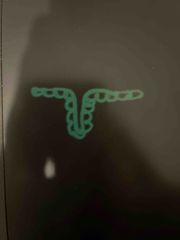
What shape is this? |
Simple Tubular |
|
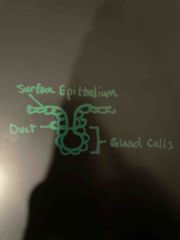
What shape? |
Simple alveolar (acinar) |
|
|
Which formation of glandular epithelium is not found in adults, as it is a stage of development of simple branches glands? |
Simple alveolar (acinar) |
|
|
What is the difference between simple and compound shape glandular epithelium? |
Simple only has 1 duct, compound has 3 |
|
|
Where can you find simple tubular glandular epithelium? |
Sweat glands and intestinal glands |
|
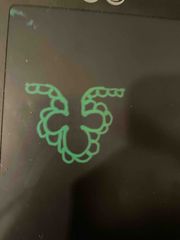
What shape? |
Simple branched alveolar |
|
|
Where could you find simple branched alveolar glandular epithelium? |
Sebaceous (oil) glands |
|

Both of these are known as? |
Compound Tubular |
|
|
Where can you find compound tubular glands? |
Salivary glands in the mouth, bulbaurethral glands (male reproductive system), and testes (seminiferous tubules) |
|
|
Where can you find compound tubular glands? |
Salivary glands in the mouth, bulbaurethral glands (male reproductive system), and testes (seminiferous tubules, location of sperm production) |
|
|
Compound alveolar (acinar) form can be found where? |
Mammary glands |
|
|
What are 3 types of Glandular Secretion? |
Eccrine (Merocrine) Apocrine Holocrine |
|
|
Within which Glandular secretion does the secretion move to the apical surface of the cell to be released by Exocytosis |
Eccrine (Merocrine) |
|
|
Within which glandular secretion does the cell remain undamaged whenever the secretions leave? |
Eccrine (Merocrine) |
|
|
Which glandular secretion is also known as the “watery” sweat glands; found in hairless parts of our body (palms, foot soles, salivary glands in our mouth |
Eccrine (Merocrine) |
|
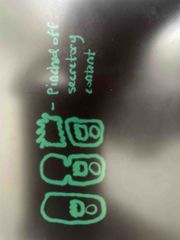
Which type of glandular secretion? |
Apocrine |
|
|
Which glandular secretions are known as puberty glands? |
Apocrine |
|
|
Where are apocrine secretions located? |
Axillary region, genital region, nipple region |
|
|
Which glandular secretion secrete their products into the hair follicles? |
Apocrine secretion; they secret organic products (proteins, lipids, steroids) and then mix with bacteria, bacteria breaks down these compounds releasing stench |
|
|
Which secretion is responsible for emotional sweating? |
Aprocrine secretions |
|
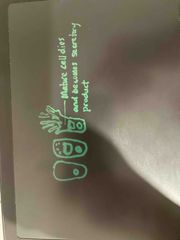
Which type of secretion? |
Holocrine Secretion |
|
|
Which secretion constitutes the eruption and destruction of gland cell, produces oil on skin and hair? |
Holocrine secretion |
|
|
Which secretion is known as sebaceous glands? (Produce sebum) |
Holocrine Secretion |
|
|
What is sebum? |
Oil, lubricant, in hair. Non-polar |
|
|
Acne on your back, face, or chest are caused by which secretion? |
Holocrine secretion, due to overproduction of sebum, pores get clogged |
|
|
What is “-*itis”? |
Inflammation |
|
|
What is inflammation? |
The standard and initial response of the body to injury. Limits the extent of the injury, initiates the regeneration of the damaged tissue |
|
|
What are examples of inflammation? |
Arthritis (joints) Meningitis (nerves) |
|
|
What are the five signals are inflammation? |
Pain, Heat, Redness, Swelling, and loss of function |
|
|
After being cut, your body releases these inflammatory signals that cause what? |
Evoke vasodilation (widening of blood vessels) to increase blood flow, leading to heat and redness. |
|
|
Which vasodilator is called for increasing blood flow to an injury? |
Histamine |
|
|
After Histamine has increased blood flow to an injury, our blood vessels become leaky, which results in? |
The fluid out of the blood vessels to leak into the interstitial space, causing the tissues to swell (edema) |
|
|
What is edema? |
Swelling of tissues (post leaking from increased blood flow caused by Histamine) |
|
|
How can edema cause pain? |
The swollen tissues can press against pain receptors in the skin |
|
|
What is an NSAID? |
Non-steroidal anti inflammatory drug |
|
|
How do NSAIDs stop pain? |
By stopping the synthesis of prostaglandins, thus reducing inflammation |
|
|
How do antihistamines help with allergies? |
They block histamine receptors |
|
|
What causes gray hair? |
Less melanin |
|
|
What causes wrinkles? |
Decreased elasticity due to the production of less protein (collagen and elastin protein). Tissues also become dryer and thinner |
|
|
Hearing loss is caused by? |
Losing elasticity in the ear and hair loss in the ears |
|
|
What is atrophy? |
Muscle loss |
|
|
What causes loss of memory/cognition? |
Decrease in nerve signaling communications to each other |
|
|
How do cells change with age? |
Telomeres at the ends of chromosomes shorten after every division, slowing down regeneration over time |
|
|
How are bones affected with age? |
Bone density decreases and calcium is lost (extremely important for bone health). |
|
|
How are joints affected by age? |
Joints stiffen due to the decrease in the production of synovial fluid (helps lubricate and cushions our joints). Loss of cartilage (once you lose it, it’s gone) |
|
|
Which type of epithelial tissue usually forms membranes where filtration or exchange of substances by diffusion occurs? |
Simple squamous |

